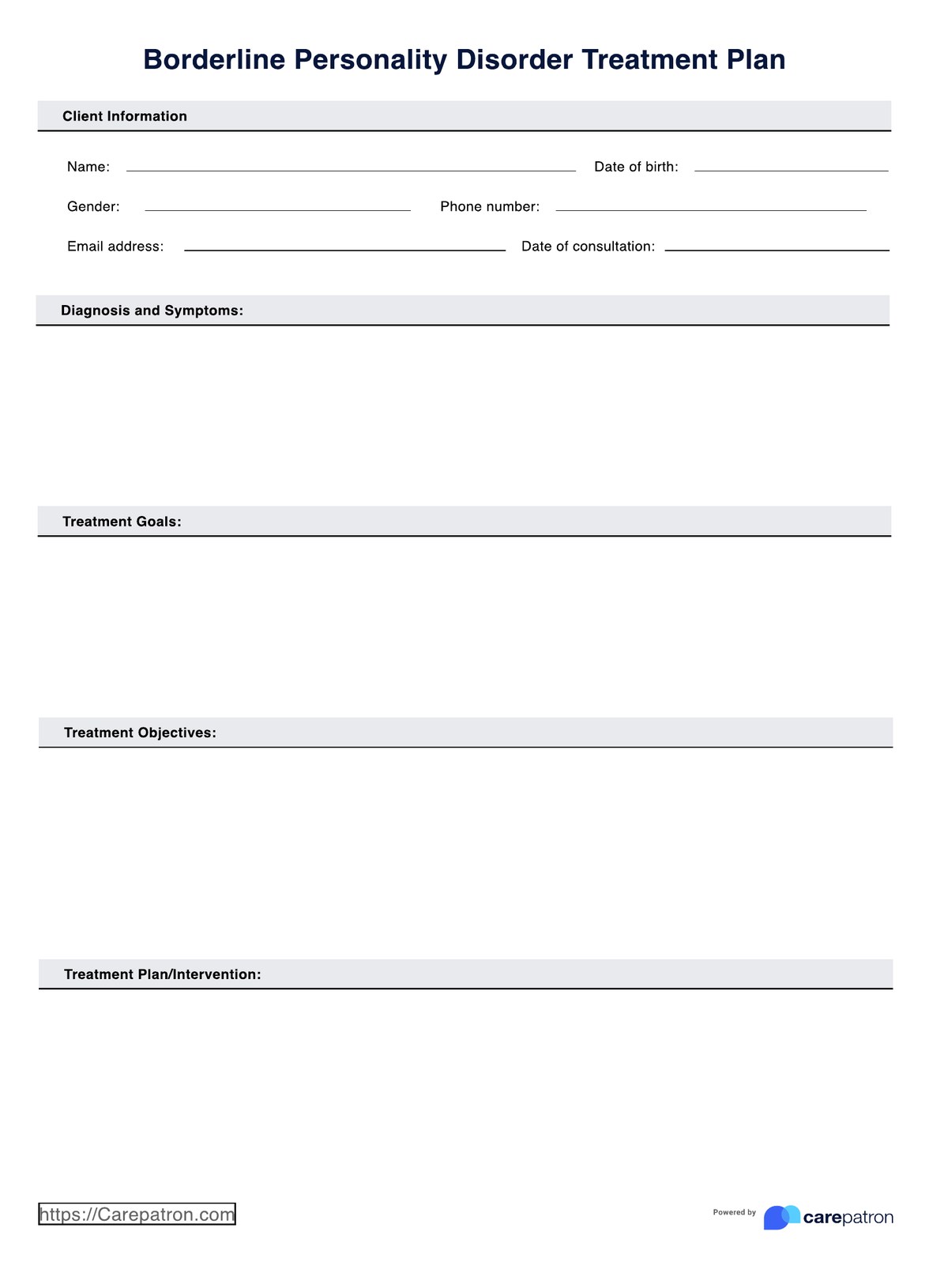Several types of therapy are effective for treating Borderline Personality Disorder (BPD), including Dialectical Behavior Therapy (DBT), Cognitive Behavioral Therapy (CBT), and Psychodynamic Therapy. Working with a mental health professional with experience treating BPD is essential to determine which type of therapy may be most beneficial for you.

Borderline Personality Disorder Treatment Plan
Create personalized Borderline Personality Disorder Treatment Plans easily using Carepatron’s customizable template. Improve patient outcomes and streamline care coordination.
Borderline Personality Disorder Treatment Plan Template
Commonly asked questions
While there is no standardized template for Borderline Personality Disorder Treatment Plans, some common elements are often included, such as diagnosis, treatment goals, treatment objectives, treatment plan, and follow-up plan. It is essential to customize the template to fit the individual patient's needs is necessary.
The frequency of updates to the treatment plan will depend on the individual patient and their needs. Reviewing the treatment plan, such as every 3-6 months, is a good idea. However, if the patient's needs or circumstances change significantly, the treatment plan should be updated sooner.
EHR and practice management software
Get started for free
*No credit card required
Free
$0/usd
Unlimited clients
Telehealth
1GB of storage
Client portal text
Automated billing and online payments











